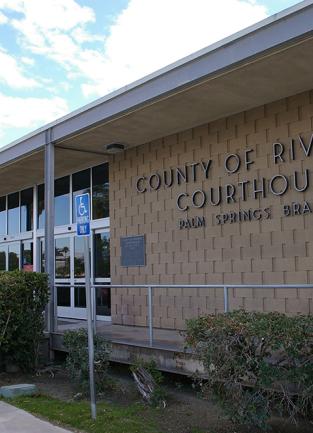The Mexican Legal System at a Glance

May 17, 2024
Riverside County lies just over 100 miles from the Mexican border and much of our population has business and personal connections with our neighbors to the south. On Cinco De Mayo, many Californians celebrated our close relationship with Mexico through food, drink, and music. Indeed, until 1850, California was a part of the country of Mexico. Given our close connection, I thought I would investigate a little bit into Mexico’s legal system. The following are some of my findings!
Mexico gained its independence from Spain in 1821. In the 1860s, it withstood attempts at French colonialization; a certain battle during this adventure provides the reason that Cinco De Mayo is celebrated. Like the U.S., Mexico is a republic consisting of a federal government divided into executive, legislative and judicial branches. Mexico’s territory is also divided into individual states with their own laws and courts. Elections are held for both state and federal offices.
Both countries have a similar three-tiered court system starting with the courts of first instance (superior court), then the appellate, and finally the supreme court. State and federal laws are codified and organized by subject in a very similar manner to the United States. While in the US, the legislative branch initiates most new laws; in Mexico, nearly all laws originate in the executive branch.
The main difference in our legal systems lies in the fact that the US, as a former colony of England, uses the common law legal system. In this system, laws are created by the legislative branch and interpreted by the judicial branch. Previously decided cases, called precedents, are then used by judges as a framework for future decisions.
Mexico’s history as a colony of Spain resulted in its adoption of the civil law system; the oldest and most widely used legal system in the world today. The civil law system has its roots in ancient Roman Law and has been refined over the centuries by legal experts, mainly in France, Spain, and Italy. Mexican law also incorporates aspects of Pre-Columbian and Canon law.
In the Mexican legal system, the text of the laws themselves are closely examined and their interpretations debated. If no individual code is found to fit the circumstance of an individual case, several articles may be used in combination. Statutory codes in Mexico and other civil law countries are much more detailed than in common law countries.
Although precedents are used sparingly, Mexico does have the concept of “jurisprudencia,” which is established when five consecutive and consistent decisions have been issued on a point of law, allowing it to be considered “settled law” in deciding subsequent cases. When the law is unclear, judges look to treatises written by legal scholars called ‘doctrina’ for guidance. For this reason, it is said that in the common law system, judges dictate the law where in the civil law system the law is determined by intellectuals.
One unique facet of the Mexican legal system are Amparo suits. These encompass several different kinds of legal actions dealing with individual rights and are the most common category lawsuits heard by Mexican courts.
Judges in Mexico serve as active participants in investigations and witness selection. The prosecutors in criminal cases conduct investigations, obtain evidence, and validate the evidence they find. As in the US, the accused is entitled to representation, including the services of a public defender.
Some other interesting facts I learned about the law in Mexico:
Our criminal justice systems are very different. In Mexico, the accused is considered guilty until proven innocent. Pre-trial detention is mandatory for many crimes and the criminal justice process can move very slowly. There are no jury trials in Mexico, in either civil or criminal court.
Drugs and weapons are regulated very strictly, cannabis is not differentiated legally from heroin or cocaine.
Fraud is viewed as a criminal rather than a civil matter.
There is no death penalty in Mexico.
Family law differs among the states in Mexico, but divorce and same-sex marriage are recognized nationwide. Legal documents can be modified to reflect a person’s change of name and gender identity and conversion therapy is illegal and punishable by incarceration.
Joint custody for children is not an option, minors reside with the mother unless she is considered unfit. Probate laws fall under the state category and have many similarities to those of the United States. A foreign will is legally recognized by the courts if it meets the legal requirements of a Mexican will.
I was surprised by how little I knew about the legal system of our close neighbor and look forward to learning more in the future. The Riverside County Law Library is a great place to start doing research. Our Lexis Plus database features articles and toolkits to help navigate the law in Mexico and our print state case books cover the transition of California law from the Mexican to the US systems.
Sources:
Human Rights and the Justice System in Mexico
A Mexican legal system primer | Tecma
Mexican Legal System | Daniel F. Cracchiolo Law Library (arizona.edu)










